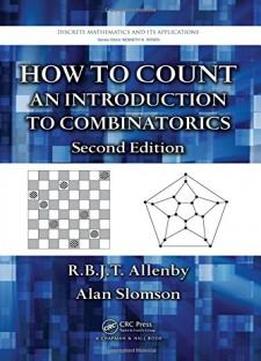
How To Count: An Introduction To Combinatorics, Second Edition (discrete Mathematics And Its Applications)
by R.B.J.T. Allenby /
2010 / English / PDF
3.1 MB Download
Emphasizes a Problem Solving Approach
Emphasizes a Problem Solving Approach
A first course in combinatorics
A first course in combinatorics
Completely revised,
Completely revised,How to Count: An Introduction to
Combinatorics,
How to Count: An Introduction to
Combinatorics,Second Edition
Second Edition shows how
to solve numerous classic and other interesting combinatorial
problems. The authors take an easily accessible approach that
introduces problems before leading into the theory involved.
Although the authors present most of the topics through concrete
problems, they also emphasize the importance of proofs in
mathematics.
shows how
to solve numerous classic and other interesting combinatorial
problems. The authors take an easily accessible approach that
introduces problems before leading into the theory involved.
Although the authors present most of the topics through concrete
problems, they also emphasize the importance of proofs in
mathematics.New to the Second Edition
New to the Second Edition
This second edition incorporates 50 percent more material. It
includes seven new chapters that cover occupancy problems,
Stirling and Catalan numbers, graph theory, trees, Dirichlet’s
pigeonhole principle, Ramsey theory, and rook polynomials. This
edition also contains more than 450 exercises.
This second edition incorporates 50 percent more material. It
includes seven new chapters that cover occupancy problems,
Stirling and Catalan numbers, graph theory, trees, Dirichlet’s
pigeonhole principle, Ramsey theory, and rook polynomials. This
edition also contains more than 450 exercises.
Ideal for both classroom teaching and self-study, this text
requires only a modest amount of mathematical background. In an
engaging way, it covers many combinatorial tools, such as the
inclusion-exclusion principle, generating functions, recurrence
relations, and Pólya’s counting theorem.
Ideal for both classroom teaching and self-study, this text
requires only a modest amount of mathematical background. In an
engaging way, it covers many combinatorial tools, such as the
inclusion-exclusion principle, generating functions, recurrence
relations, and Pólya’s counting theorem.











